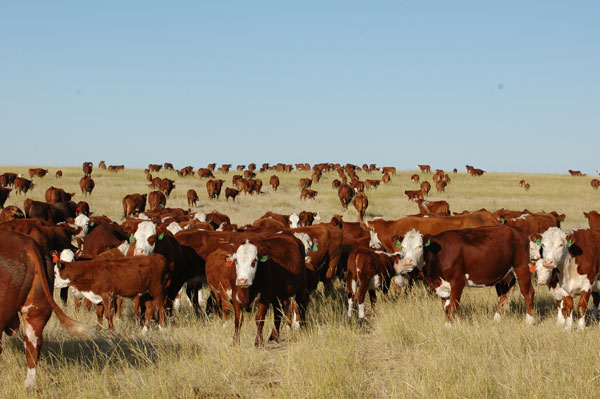Derrell Peel, Oklahoma State University Extension livestock marketing specialist, points out 72% of the beef cow herd expansion documented by USDA is in Texas, Oklahoma and Kansas. These states are rebuilding from drought even as parts of them remain mired in drought.
February 13, 2015

The first expansion of the U.S. beef cow herd recorded in almost two decades needs some extra help from Mother Nature, considering where most of the expansion took place.
According to USDA’s annual Cattle inventory report, there were 2% more beef cows Jan. 1 than the year before for a total of 29.7 million beef cows. There were 4% more beef replacement heifers—4.8 million head total. Part of the degree of increase was due to adjustments USDA analysts made to previous numbers.
Derrell Peel, Oklahoma State University Extension livestock marketing specialist, pointed out at the early-February Cattlemen’s College sponsored by Zoetis that producers have retained more beef replacement heifers year-over-year since 2011, but this was the first year Mother Nature allowed them to be kept.
Peel also pointed out that 72% of the expansion occurred in Texas, Oklahoma and Kansas. To varying degrees, these states are rebuilding from drought. Also to varying degrees, parts of these same states are still slogging through drought, while others are just a short dry season from renewed dire straits.
“This report does not change market fundamentals much, if any, in 2015,” Peel explained in his weekly market comments. “The fact that there are more cows than expected does not change the timing of beef production in 2015. The marginal increase in estimated feeders provides little relief to tight feeder numbers and may be offset with even more heifer retention and the possibility of smaller feeder cattle imports from Mexico and Canada this year. The jumpstart to herd expansion could shave a year off the time needed for herd rebuilding, depending on herd expansion in 2015 and beyond. In any event, herd expansion is expected to continue until late in the decade barring setbacks from drought.”
You might also like:
4 shots at explaining an unexplainable cattle market
Save some time! Bale grazing lets cows feed themselves
7 U.S. cattle operations honored for stewardship efforts
Prevention and treatment of cow prolapse
8 tips for being a better ranch manager in 2015
About the Author(s)
You May Also Like





